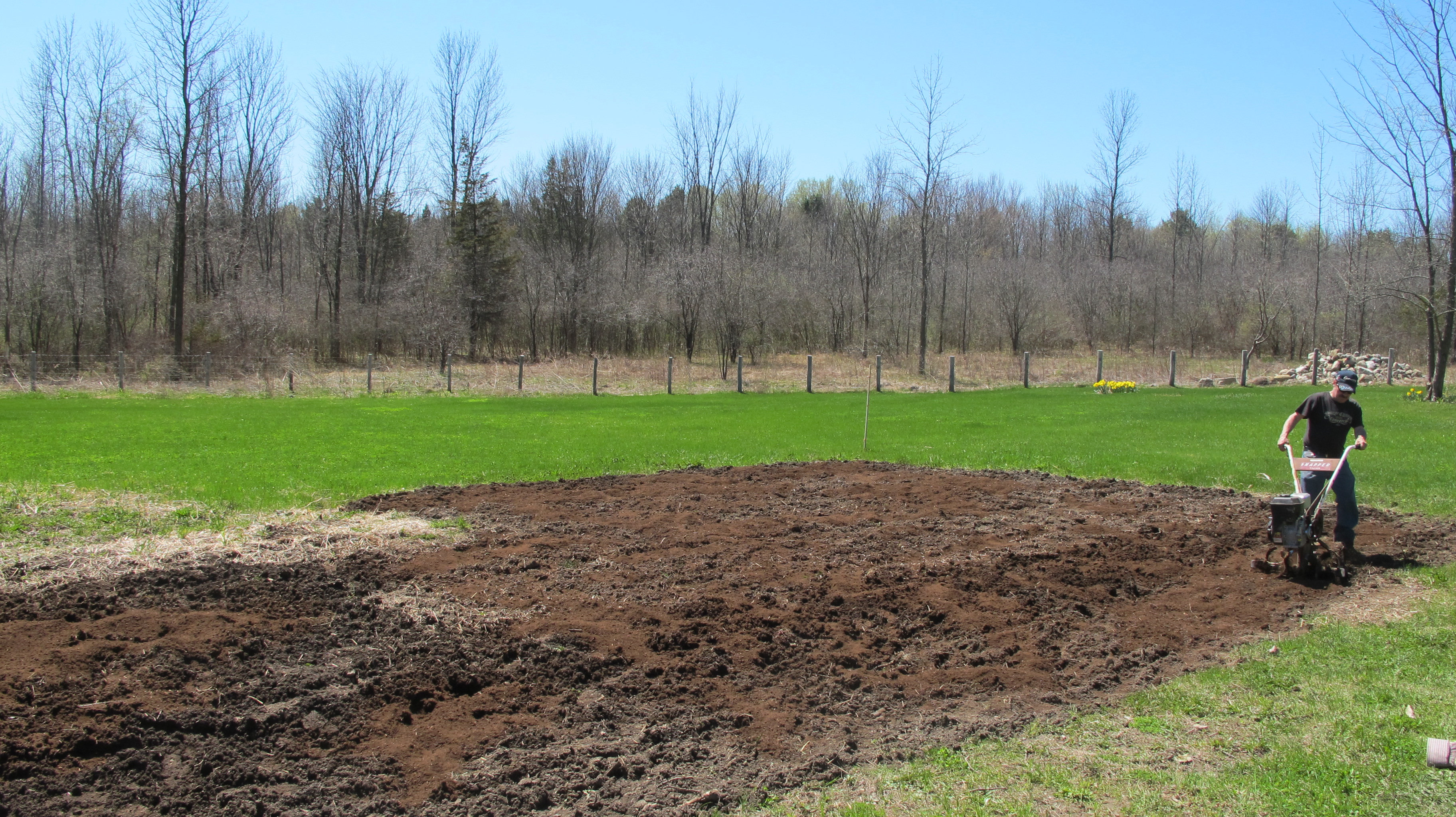
Lately I’ve been reflecting on all the trees I wish I’d planted in the fall of 2006 and the spring of 2007. We’ve been adding new trees for a year now — a half dozen or so each spring and fall — and yet I can’t help but imagine what might be today if I’d started earlier. Fruit trees ten or twelve feet tall would still be blooming. We would have been harvesting apples and pears and plums and apricots and peaches for a couple of seasons by now.
In fact, we have harvested some apples and pears during the last two years, but they didn’t come from newly planted trees. I’ve been restoring a couple dozen gnarly, long neglected apple trees (and two pear trees) scattered throughout the meadows behind our barns. Whittling a third of their old growth away each season, I’ve begun to nurse the old trees back to health, and several have begun to produce palatable fruit.
I’ve wiled away many beautiful hours lopping and sawing from the top of a ladder or winding my way through the limbs like a monkey. I’ve loved every minute of it and not just for the promise of future fruit.
It’s a funny thing, an orchard. So many functions wrapped up in one little plot of land, one little grid of fruit trees. Obviously one of the most important is also the most self evident: an orchard is a neighborhood “market”, if you will. A fresh fruit grocery less than a minute from the kitchen. An organic grocery where I can be 100% confident that no pesticide and no unwholesome ripening techniques have sullied the fresh fruit.

And then there are the flowers. Gardeners, landscapers, poets and painters have romanced the seasonal blossoms of fruit trees for hundreds of years. I am no exception despite my utilitarian, upcountry ways. An orchard is a geometric bouquet of blooms, an annual riot against leafless canopies and gray, drizzly spring days. And even when blossoms flutter earthward and the boughs fill with thick plumes of adolescent foliage, there remains a subtle nobility in the orchard’s orderly procession.
During hot summer days the orchard becomes contemplative, concentrating on nurturing promises into bounty. The fruit trees reach deep into the cool earth for water and high into the sky for sunshine. They brace their increasingly heavy load against winds and thunderstorms.
And then it’s time for the harvest. Whether a crisp apple plucked during a mid-day walk with Griffin or a pear sauce cooked down with vanilla, cloves and a jigger of maple syrup, I’ve already begun to enjoy the fruits of my labors. This August through October should offer up an even more robust crop of apples and pears. And someday soon I hope to acquire a cider press and invite friends and neighbors for a weekend of fruit gathering and cidering. A potluck. Music in the meadows. And by then, with luck, the apricots and peaches and plums will have begun to produce as well. What fruity feasting we’ll do!

During the winter months another often overlooked function of the orchard reveals itself. In order to maintain healthy fruit trees while improving their physical architecture and productivity it’s necessary to prune the trees during the period of winter dormancy. This is a chore, and the bigger the orchard grows, the bigger the chore. But unlike most chores, pruning an orchard is far more than a line item on a To Do list.
There’s a creative element, shaping and guiding the trees’ growth habit year after year. And there is a serotonin inducing pick-me-up triggered by dedicating yourself to an activity during the winter doldrums which will increase summer abundance. An investment in future harvests.
But for me, the single greatest reward of fruit tree orcharding occurs during the off-season. My bride is an avid and dedicated practitioner of yoga. Not I. For me it’s fruit tree pruning. I don’t think it’s a reach to suggest that pruning fruit trees in the late winter and early spring is my yoga. It’s my mindfulness meditation.
And then there’s grafting… But that alchemist’s hobby for another day, another post.
Now I’m off to sleep to dream of the orchards we might have had today if we could have initiated our orchard yoga sooner!













 An early and mostly temperate spring has given us a jump start in Rosslyn’s gardens and meadows. The new orchard behind the carriage barn, already planted with plum trees and pear trees, has almost doubled in size over the last couple of weeks with the addition of apricots and peaches.
An early and mostly temperate spring has given us a jump start in Rosslyn’s gardens and meadows. The new orchard behind the carriage barn, already planted with plum trees and pear trees, has almost doubled in size over the last couple of weeks with the addition of apricots and peaches.